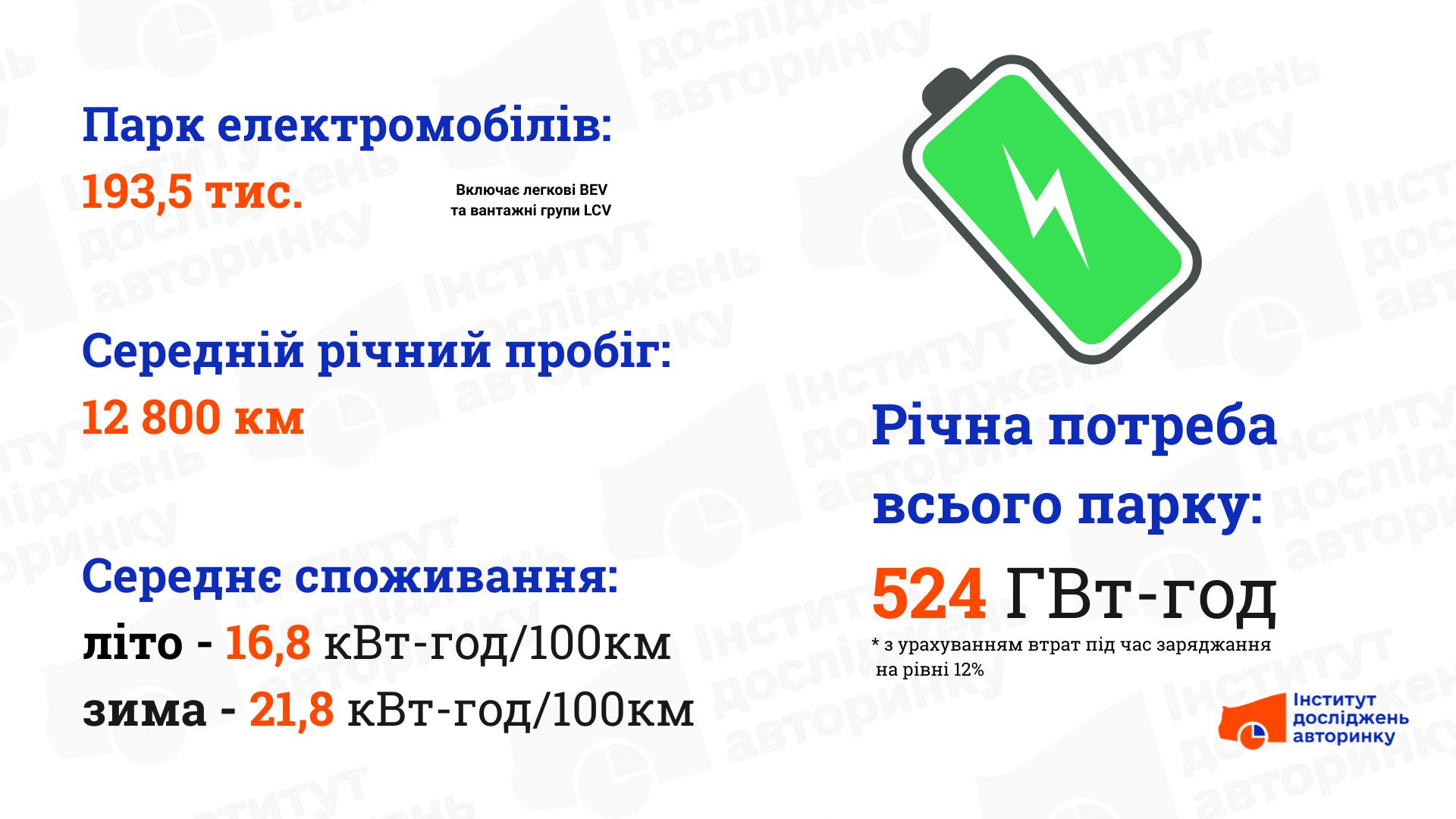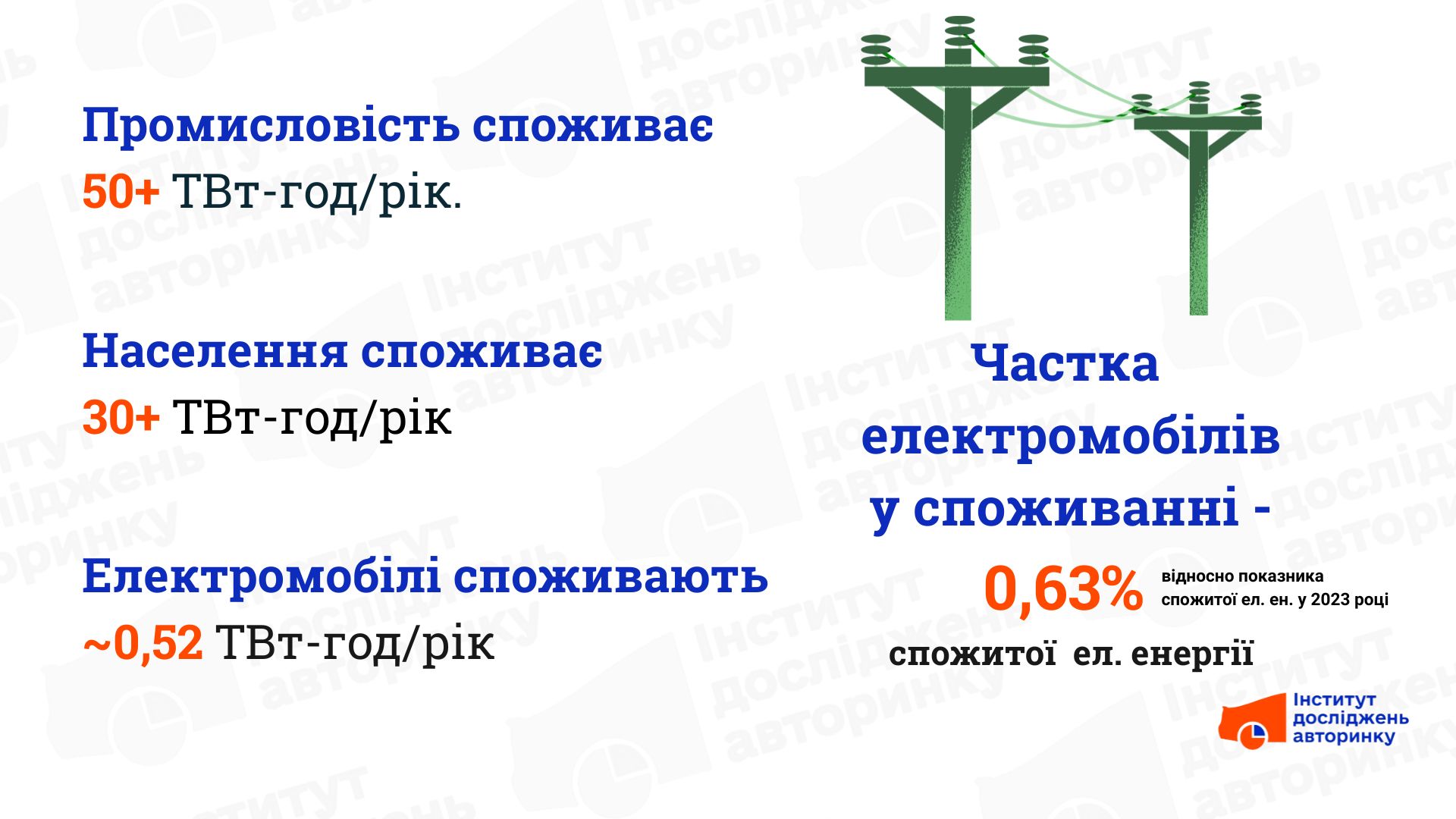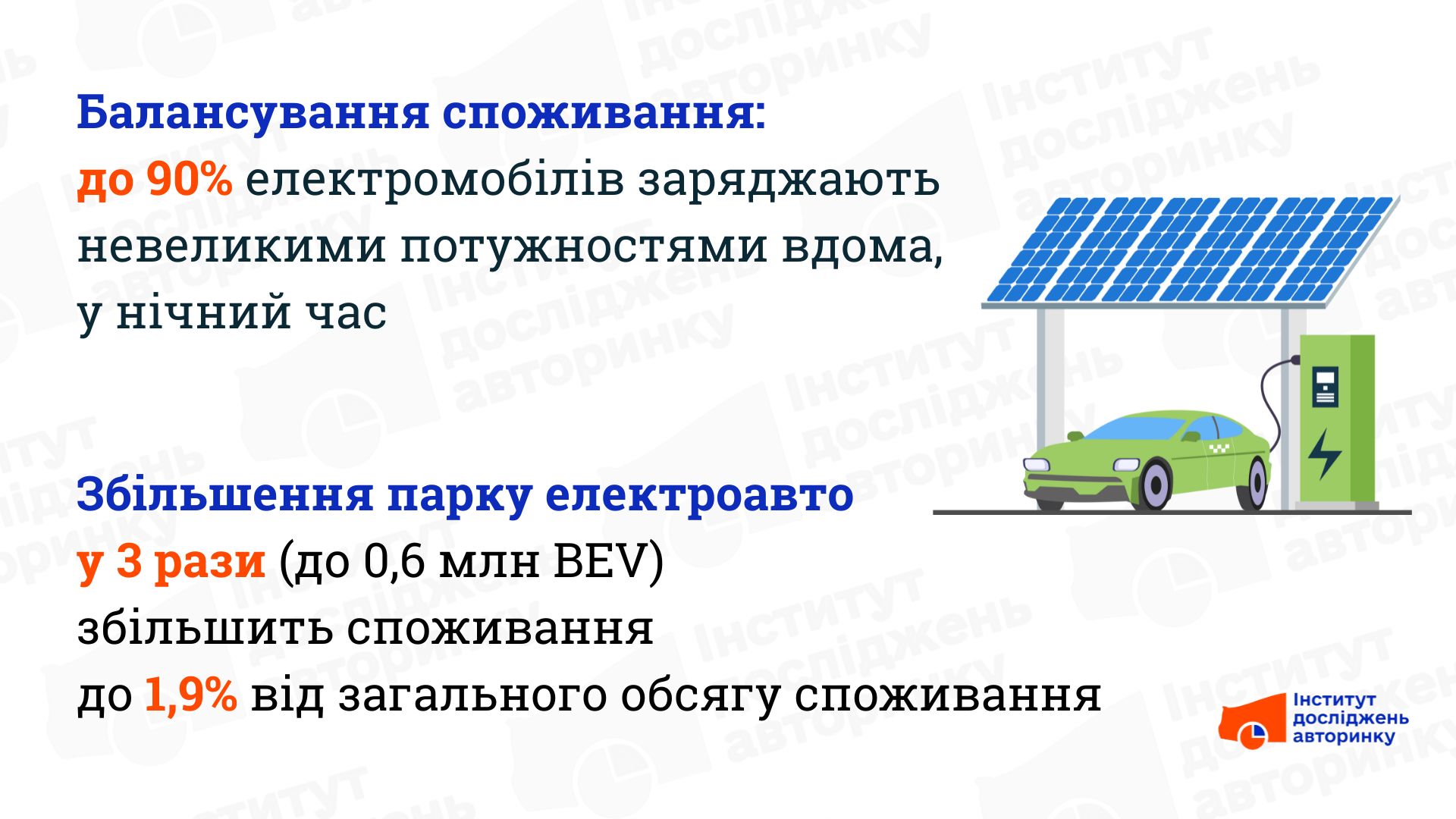The development of the electric vehicle segment is still controversial. There are supporters, even fanatics, and there are opponents — from those who are simply afraid to take a step away from the usual gasoline, to those who convince others that «electrics» can cause a blackout if there are too many of them.
The question is really interesting. The Ukrainian power system was designed decades ago — when the main consumers were light bulbs, TVs, and refrigerators. Now, every apartment has dozens of appliances, and sometimes even an electric car — a consumer that can no longer fit in an apartment.
But all this talk without numbers is worth little. Therefore, experts from the Institute for Automotive Market Research, together with the DiXi Group analytical center, decided to investigate the issue thoroughly: will there be enough electricity for everyone despite electric cars, and is there a limit beyond which the next car in the fleet could cause an overload of the system.
Electric vehicle fleet in Ukraine
As of October 2025, 193.5 thousand electric vehicles were registered in Ukraine, of which 98% were passenger electric vehicles, and the rest were commercial models of the LCV group.
Based on IDA data, key parameters for calculations were determined.
The top ten most popular models include cars, which account for more than half (57%) of the entire fleet. An analysis of their structure by age and type allowed us to determine the average electricity consumption:
- 16.8 kWh per 100 km in summer and 21.8 kWh in winter.

Next up are the runs.
The most popular model in Ukraine, the first-generation Nissan Leaf, drives an average of 11,400 km per year. Volkswagen e-Golf owners drive about 13,500 km, and Tesla is on par with cars with internal combustion engines: 17,000 km per year.
By weighing these indicators proportionally to the share of each model (taking into account the entire model fleet), we obtain an average mileage of 12,800 km per year for a typical Ukrainian BEV.
Energy consumption of electric vehicles
Given the mileage and average consumption, you can determine the fleetʼs daily, monthly, and annual electricity needs:
- Average daily consumption:
— summer period — 1,141 MWh
— winter period — 1,480 MWh
- Average monthly consumption:
— summer period — 34.7 GWh
— winter period — 45.0 GWh
Therefore, the annual demand in the «on-demand» format, taking into account seasonality, is 468 GWh.However, this value shows consumption in the format «from battery to wheels plus on-board equipment», but does not take into account the associated costs, which are certainly present. These are the efficiency of inverters and chargers, the operation of battery cooling and heating systems, where an average of 10-15% of energy is lost. Applying an average coefficient of 12%, we get that the real demand of the Ukrainian electric vehicle fleet for energy from the grid is about 524 GWh per year. This number reflects their full impact on the energy system.
For comparison, this is approximately equal to the total electricity consumption of all of Ukraine during 1...1.5 winter days, or about 1.5...2 summer days.
Ukrainian generation: will there be enough " light«?
According to the Energy Map portal, electricity production and consumption in Ukraine changed due to the war, destruction of infrastructure, and occupation of part of the capacity.
Here are a few indicators:
- 2020 — 148.9 TWh produced, 116.2 TWh consumed
- 2021 — 156.6 TWh produced, 125.7 TWh consumed
- 2022 — 113.5 TWh produced, 86.0 TWh consumed
- 2023 — 105.8 TWh produced, 83.2 TWh consumed
Compared to this scale, the annual consumption of all electric vehicles (524 GWh) is only 0.63% of the electricity consumed in 2023 (the most recent data available).
For comparison: the countryʼs household sector consumed about 30 TWh per year in the coming years, industry — over 50 TWh.
That is, all electric vehicles together consume about 1.75% of the countryʼs household consumption.
When and how do they charge?
An electric car does not consume energy evenly — it all depends on the charging time.
According to IEA, gridX and Mobility Portal, 70...85% of all charging sessions in Europe are home or office «slow» charging with a power of 2...3 kW (less often up to 7...9 kW).
In Ukraine, the situation is similar: 80...90% of charging takes place at home, mostly at night, which is stimulated by a reduced night tariff.

So, about 80% of electric vehicles consume electricity in small portions, during hours of minimal load on the system. At this time, energy companies even reduce capacity due to excess generation.
Fast charging stations with a capacity of 50...250 kW provide only a smaller share of daytime charging, and each of them is connected to the network through protective automation, which eliminates overloading of local lines or substations.
Conclusions
The existing fleet of electric vehicles, consuming about 0.6% of total electricity consumption, is not capable of posing a threat to the power system.
Even doubling or tripling the number to 0.6 million cars would raise consumption to about 1.9%, which is also not critical.
It is worth remembering that generation in Ukraine works on the principle of load balancing : if demand increases, production also increases. The key is that generation capacities are not damaged by war.
Forecast and future
If the growth rate of the electric vehicle fleet remains at the level of +50 thousand cars per year, by 2030 there will be about 450–500 thousand electric vehicles in Ukraine.
Their energy needs will be about 1.35 TWh per year — about 1.3 percent of the generation level in 2023.

The main challenge will not be electricity generation, but rather local infrastructure — the ability of substations, internal networks and residential buildings to withstand the mass installation of chargers. This issue is already partly taken into account in new building codes and city energy plans.
Expert opinion
« Today, electric vehicles do not pose a threat to Ukraineʼs energy system, and the further development of such a fleet is provided for by strategic documents, such as the National Plan for Renewable Energy and the National Plan for Energy and Climate, with the aim of decarbonizing transport. At the same time, responsible electricity consumption remains important, especially in wartime. We advise you to charge your car at night, when the load on the system is lower, or on sunny days during the day, when surplus energy is generated by solar power plants. Avoid peak consumption hours in the morning (from 8:00 to 11:00) and in the evening (from 17:00 to 23:00), and also listen to the advice of «Ukrenergo», which regularly reports when it is better to use powerful appliances, and when it is worth refraining from using them ."— Oksana Zueva, Senior Open Data Expert, DiXi Group.
- Subscribe to the Telegram channel of the Auto Market Research Institute to receive information first, without advertising and spam.



